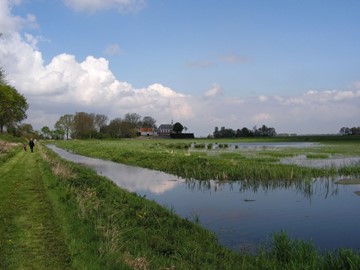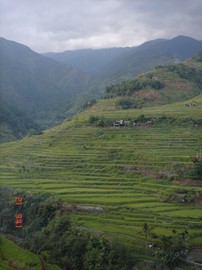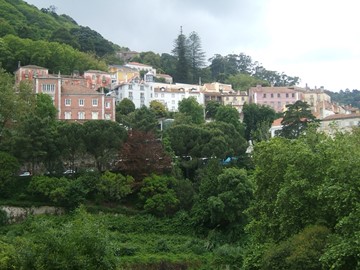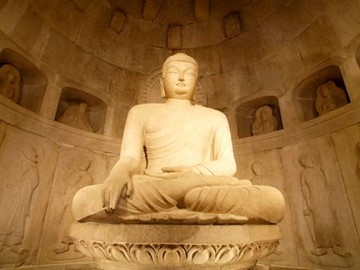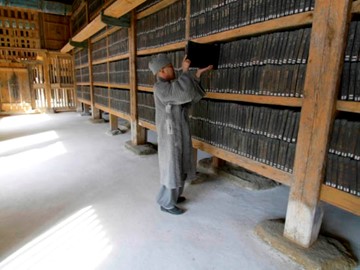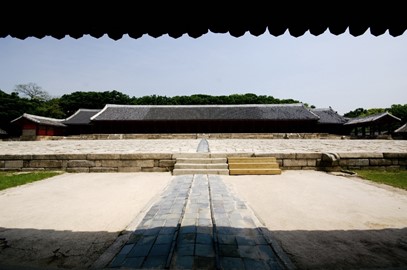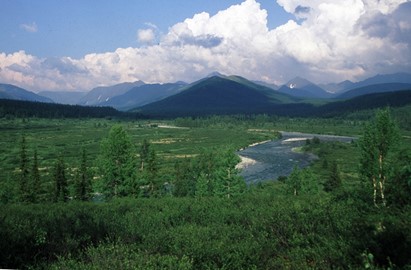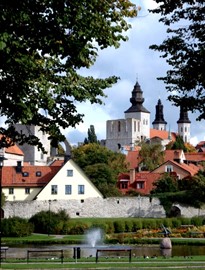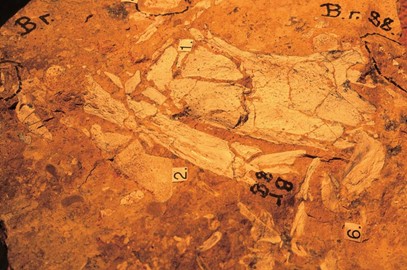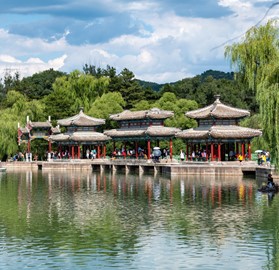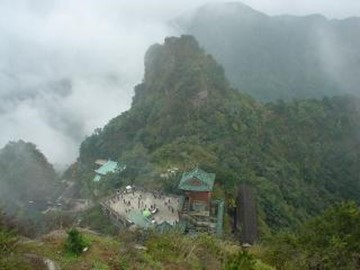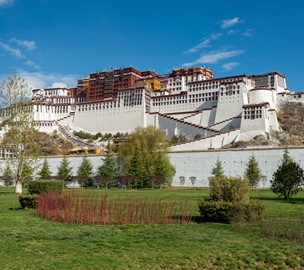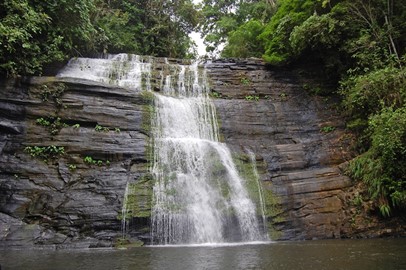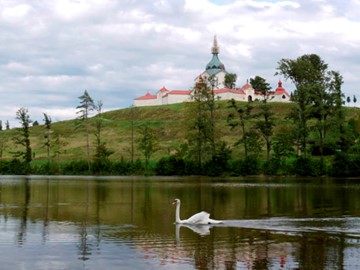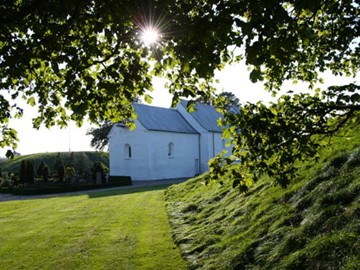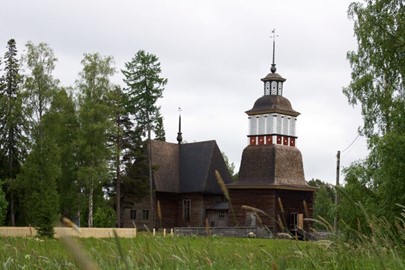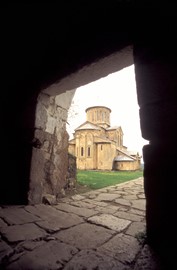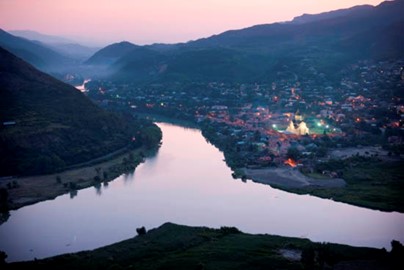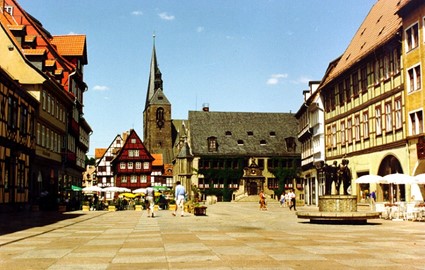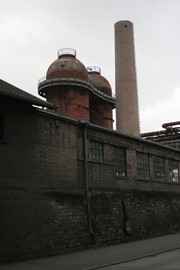search
Schoklands
Schokland, a UNESCO World Heritage Site in the Netherlands, is a former island in the Zuiderzee that symbolizes the Dutch struggle against water. Once a thriving settlement, it was abandoned in 1859 due to relentless flooding, only to be reclaimed as part of the Noordoostpolder in the 1940s. Rich with over 160 archaeological sites, it preserves traces of human habitation from prehistoric times, including ancient footprints and tools, alongside historic structures like dykes and terps, showcasing a unique bl... Read More
Rice Terraces of the Philippines
The Rice Terraces of the Philippine Cordilleras, a UNESCO World Heritage site, are an architectural marvel created by the Ifugao people over 2,000 years ago. These hand-carved terraces, built into steep mountainsides, demonstrate remarkable engineering skill and sustainable farming practices, utilizing an intricate irrigation system that harnesses water from the forests above. Often called the 'Eighth Wonder of the World,' they reflect a harmonious blend of human ingenuity and natural landscape, preserved t... Read More
Sintra
The Cultural Landscape of Sintra, a UNESCO World Heritage site, is renowned for its unique blend of natural beauty and historic architecture. This picturesque region features lush hills dotted with extravagant palaces, romantic gardens, and ancient castles, reflecting centuries of aristocratic influence and artistic heritage. Notable landmarks include the colorful Pena Palace and the Moorish Castle, which highlight a fusion of Gothic, Manueline, and Moorish styles. Its well-preserved environment and cultura... Read More
Seokguram Grotto and Bulguksa Temple
Seokguram Grotto and Bulguksa Temple, a UNESCO World Heritage site, exemplify Korea's rich Buddhist heritage and architectural prowess. The grotto, an artificial cave carved into granite, houses a serene Buddha statue surrounded by intricately sculpted bodhisattvas, showcasing exceptional 8th-century artistry. Adjacent Bulguksa Temple, a wooden complex, reflects harmonious design with its elevated platforms, ornate pagodas, and tranquil courtyards, embodying spiritual and aesthetic ideals of the era. Togeth... Read More
Haeinsa Temple
Haeinsa Temple, a UNESCO World Heritage site in South Korea, is renowned for its historical and cultural significance as a center of Korean Buddhism. Founded in 802 CE during the Silla Dynasty, it houses the Tripitaka Koreana, an extraordinary collection of over 81,000 wooden printing blocks inscribed with Buddhist scriptures, completed in the 13th century. The temple's Janggyeong Panjeon, a specially designed storage facility, has preserved these blocks for centuries, showcasing remarkable architectural in... Read More
Jongmyo Shrine
Jongmyo Shrine, a UNESCO World Heritage site in Korea, is a Confucian royal ancestral shrine dedicated to commemorating the deceased kings and queens of the Joseon Dynasty. Constructed in 1394 during King Taejo’s reign, it embodies traditional East Asian architectural principles and houses the spirit tablets of royalty in a serene, ritual-focused setting. The shrine hosts the Jongmyo Jerye ceremony, an ancient Confucian rite featuring music and dance, recognized as an Intangible Cultural Heritage. Its histo... Read More
Virgin Komi Forests
The Virgin Komi Forests, a UNESCO World Heritage site in Russia, represent one of the largest remaining expanses of pristine boreal forest in Europe. This untouched wilderness is home to a rich diversity of flora and fauna, including rare species like the Siberian pine and brown bear, thriving in an ecosystem shaped by natural processes over millennia. The site’s old-growth forests and peat bogs play a critical role in carbon storage, highlighting its global ecological significance. It stands as a vital tes... Read More
Visby
The Hanseatic Town of Visby, a UNESCO World Heritage site in Sweden, is a remarkably preserved medieval trading center on the island of Gotland. Its 13th-century ramparts, over 200 warehouses, and historic churches, like the Sankta Maria Cathedral, showcase its past as a key Baltic Sea hub within the Hanseatic League. The town's cobblestone streets and well-maintained ruins offer a glimpse into its prosperous history, making it a standout example of Northern European medieval architecture and urban planning... Read More
Edinburgh
The Old and New Towns of Edinburgh, a UNESCO World Heritage site, showcase a remarkable blend of medieval and Georgian architecture. The Old Town features narrow, winding streets and historic landmarks, reflecting its medieval origins, while the New Town boasts elegant neoclassical buildings and planned urban design from the 18th century. Together, they represent centuries of cultural and historical development, offering a well-preserved glimpse into Scotland’s past.
Gough and Inaccessible Islands
Gough and Inaccessible Islands, a UNESCO World Heritage site, are remote volcanic islands in the South Atlantic, renowned for their pristine ecosystems and towering cliffs. They host one of the world’s largest seabird colonies, including the critically endangered Tristan albatross, alongside unique endemic species like the Gough moorhen and Inaccessible Island rail. These islands, part of the Tristan da Cunha archipelago, remain largely undisturbed, offering a vital haven for biodiversity in the cool temper... Read More
Carlsbad Caverns
Carlsbad Caverns National Park, a UNESCO World Heritage Site in the USA, is renowned for its vast underground limestone chambers, formed millions of years ago by acidic water eroding the rock. The park features over 100 caves, with the most famous being the Carlsbad Cavern, home to stunning stalactites, stalagmites, and other geological formations illuminated for visitors. It also hosts a massive colony of Brazilian free-tailed bats, whose nightly exodus during warmer months draws spectators. This natural w... Read More
Colonia del Sacramento
Colonia del Sacramento, a UNESCO World Heritage site in Uruguay, is a charming historic town founded by the Portuguese in 1680. Known for its well-preserved colonial architecture, cobblestone streets, and picturesque waterfront along the Río de la Plata, it offers a glimpse into the region’s past as a contested settlement between Spanish and Portuguese powers. Key landmarks include the iconic lighthouse, the Basilica of the Holy Sacrament, and remnants of ancient fortifications, making it a cultural treasur... Read More
Australian Fossil Mammal Sites
Riversleigh and Naracoorte, the Australian Fossil Mammal Sites, a UNESCO World Heritage site in Australia, safeguard a remarkable collection of ancient fossils showcasing the continent’s prehistoric biodiversity. These sites feature well-preserved remains of extinct megafauna, such as the giant wombat-like diprotodon and the marsupial lion, spanning millions of years. Encased in dramatic limestone formations and desert terrains, they provide critical insights into Australia’s evolutionary past. This invalua... Read More
Mountain Resort, Chengde
The Mountain Resort, a UNESCO World Heritage site in China, is a remarkable imperial retreat known for its harmonious blend of natural landscapes and traditional architecture. Constructed as a summer escape for Qing dynasty emperors, it features elegant palaces, pavilions, and temples set amidst rolling hills, serene lakes, and manicured gardens. This expansive complex showcases intricate design and cultural significance, reflecting the grandeur and sophistication of imperial China while offering a tranquil... Read More
Temple of Confucius in Qufu
The Temple of Confucius, a UNESCO World Heritage site in China, is a historic complex dedicated to the revered philosopher Confucius, embodying centuries of cultural and spiritual significance. Originally built in 478 BCE and expanded over time, it features grand halls, ancient steles, and ornate courtyards that reflect traditional Chinese architectural mastery. As a center for Confucian worship and education, it preserves rituals, artifacts, and teachings, drawing scholars and visitors to honor one of hist... Read More
Wudang Mountains
The Wudang Mountains, a UNESCO World Heritage site in China, are a sacred range celebrated for their Taoist heritage and stunning natural beauty. Home to ancient temples, monasteries, and palaces perched atop rugged peaks, the site reflects centuries of spiritual practice and architectural ingenuity. Renowned as the birthplace of Tai Chi, its misty slopes and lush forests create a serene backdrop, attracting pilgrims and martial arts enthusiasts alike to this harmonious blend of culture and nature.
Potala Palace
The Potala Palace, a UNESCO World Heritage site in China, is an iconic fortress and former residence of the Dalai Lamas, symbolizing Tibetan Buddhism’s rich history. Perched atop a hill, this architectural marvel features towering white and red walls, intricate murals, and sacred chapels filled with ancient relics. Built in the 7th century and expanded over time, it blends spiritual significance with stunning design, offering a glimpse into centuries of cultural and political heritage.
Los Katíos
Los Katíos National Park, a UNESCO World Heritage site in Colombia, is a biodiversity hotspot renowned for its rich ecosystems, including tropical rainforests, wetlands, and rivers. It serves as a critical habitat for numerous species, such as jaguars, tapirs, and rare primates, alongside a variety of migratory birds. The park also holds cultural significance, with archaeological evidence of pre-Columbian communities, making it a vital link to Colombia’s natural and historical legacy. Its unique geography a... Read More
Pilgrimage Church of St John of Nepomuk
The Pilgrimage Church of St John of Nepomuk, a UNESCO World Heritage site in Czechia, is an architectural masterpiece built in the early 18th century to honor the revered saint. Designed by Jan Blazej Santini, it features a unique star-shaped layout symbolizing the five stars associated with the martyr, blending Baroque and Gothic styles seamlessly. Its intricate design, including five gates, chapels, and altars, reflects deep religious symbolism and Santini’s innovative vision. Recognized in 1994, it stand... Read More
Jelling Mounds
Jelling Mounds, a UNESCO World Heritage site in Denmark, is renowned for its significant historical and cultural value. The site features two large rune stones, a church, and burial mounds dating back to the 10th century, marking the transition from paganism to Christianity in the region. The larger rune stone, erected by King Harald Bluetooth, celebrates the unification of Denmark and the spread of Christianity, making it a key artifact of Viking Age history. Today, Jelling stands as a well-preserved testa... Read More
Petajavesi Old Church
Petäjävesi Old Church, a UNESCO World Heritage site in Finland, is a wooden Lutheran church built between 1763 and 1765 by local peasants, showcasing exceptional Nordic log construction and vernacular architecture. Recognized in 1994, it blends Renaissance-style central planning with Gothic influences, reflecting the skills of its builders and the region’s cultural heritage. The church, including its 1821 bell tower, remains largely unchanged, offering a glimpse into 18th-century rural life and craftsmanshi... Read More
Gelati Monastery
Gelati Monastery, a UNESCO World Heritage site in Georgia, is a medieval complex founded in 1106 by King David IV. Known for its stunning frescoes and mosaics, it served as a center of learning and culture during Georgia’s Golden Age. The main cathedral, with its elegant dome, exemplifies Georgian ecclesiastical architecture. Surrounding buildings include an academy that preserved ancient manuscripts. This site reflects the nation’s rich spiritual and intellectual heritage. Its serene hilltop setting enhanc... Read More
Mtskheta
Mtskheta, a UNESCO World Heritage site in Georgia, is an ancient city revered as the birthplace of Christianity in the region since the 4th century. It features historic churches like Svetitskhoveli Cathedral, adorned with intricate frescoes and stone carvings. The site reflects Georgia’s early religious and architectural heritage, blending spiritual significance with cultural legacy. Nestled at a river confluence, its serene setting enhances its timeless charm. This historic gem offers a glimpse into Georg... Read More
Quedlinburg
Quedlinburg, a UNESCO World Heritage site in Germany, is a medieval town renowned for its well-preserved half-timbered houses and cobblestone streets. Dating back over 1,000 years, it features a Romanesque castle hill and collegiate church, reflecting its historical significance as an early German settlement. The town’s charming architecture showcases a blend of Gothic and Renaissance styles. Once a key center in the Holy Roman Empire, it preserves a rich cultural legacy. This site offers a captivating glim... Read More
Volklingen Ironworks
The Völklingen Ironworks, a UNESCO World Heritage site in Germany, is a vast industrial complex from the 19th and 20th centuries, once a leading iron production site. Preserved in its entirety, it features towering blast furnaces, machinery, and workers’ facilities, showcasing the Industrial Revolution’s scale. This site offers a striking look at technological heritage and labor history. Its rusted structures stand as a monument to a bygone era of heavy industry. Today, it serves as a cultural venue, blendi... Read More
